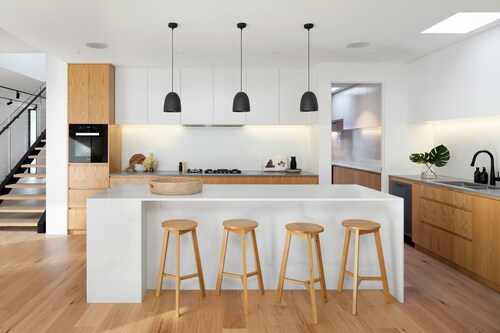
As we grow older, the comfort of home becomes even more valuable. Yet, that same familiar environment can also pose unexpected hazards—especially for the elderly or those with mobility challenges. From slippery bathroom tiles to unstable furniture, daily routines can quickly become risky without proper precautions. Thankfully, there are straightforward solutions to minimise these dangers and maintain both independence and safety.
Understanding the Risks in the Home
A significant number of hospital admissions for older adults stem from falls and related injuries. According to the World Health Organization, falls are the second leading cause of accidental or unintentional injury deaths worldwide. In many cases, these incidents occur in the home—places we assume to be the safest.
The elderly are particularly vulnerable due to factors like reduced bone density, slower reflexes, and medical conditions such as osteoporosis, arthritis, or neuropathy. These physical changes make it harder to recover balance or avoid injury during a stumble. Moreover, poor lighting, clutter, and uneven flooring only add to the risk.
Practical Modifications for a Safer Home
Making a home safer doesn’t always require major renovations. Small, cost-effective modifications can greatly reduce the likelihood of injury.
Improve Lighting
Many falls occur simply because areas are not well-lit. Ensure that all rooms, corridors and staircases have adequate lighting. Installing motion-sensor night lights in hallways and bathrooms can help avoid fumbling in the dark during the night.
Secure Rugs and Cables
Loose rugs and tangled electrical cords are common tripping hazards. Use non-slip rug underlays or double-sided carpet tape to keep rugs in place. Tuck away or secure cords along the walls or under protective covers to keep them out of walkways.
Bathroom Safety
The bathroom is one of the most dangerous rooms for falls due to wet, slippery surfaces. Installing grab rails near the toilet and inside the shower or bath can offer needed support. Consider using non-slip mats, shower chairs, and hand-held showerheads to enhance both safety and comfort.
Kitchen Considerations
Ensure that frequently used items are stored within easy reach to avoid climbing or bending. Anti-fatigue mats in front of the sink can reduce the risk of slipping on wet floors, and stove guards can prevent burns or accidental activation of burners.
Essential Aids That Make a Difference
Beyond physical modifications, a range of daily living aids can empower the elderly to move about safely and confidently.
Walking Aids
Walking sticks, rollators, and walking frames provide essential support for those with balance issues or muscle weakness. It’s important to ensure that walking aids are the correct height and in good working condition.
Bed and Chair Supports
Bed rails, chair raisers, and transfer aids assist in getting in and out of furniture safely. These are especially useful for individuals who may struggle with standing from low seating or who require extra leverage.
Personal Alarms
Wearing a personal alarm ensures that help is never far away, especially for those living alone. These devices allow users to alert carers or emergency services in the event of a fall or injury, providing peace of mind to both users and their families.
Flooring and Fall Mats
Falls from bed or chairs, especially during the night or early morning, are a major concern. Traditional flooring surfaces offer little protection from impact. That’s why many households are turning to cushioned solutions specifically designed for fall prevention.
One effective strategy is to prevent injuries with fall mats for elderly. These mats are typically made from high-density foam or gel materials that absorb shock and minimise the severity of injury during a fall. Placed beside beds or chairs, they serve as a passive but powerful safety measure—ideal for those with conditions like Parkinson’s disease, Alzheimer’s, or anyone prone to unsteadiness.
Creating a Culture of Safety
Creating a safer home environment is not only about equipment or design—it’s about awareness. Encouraging regular mobility exercises, reviewing medication side effects with healthcare providers, and scheduling routine vision checks are all part of a comprehensive safety strategy.
Family members and caregivers play a crucial role. Conducting regular walk-throughs of the home to spot and address potential hazards, encouraging the use of aids, and having open conversations about safety can dramatically reduce risk and promote well-being.
A Greater Peace of Mind
Injuries at home are preventable with a proactive approach and a willingness to adapt. From installing handrails to using fall mats and improving lighting, each small step contributes to a larger culture of safety and dignity. Whether you’re ageing in place or caring for a loved one, these simple solutions offer reassurance and the ability to enjoy home life with greater peace of mind.




